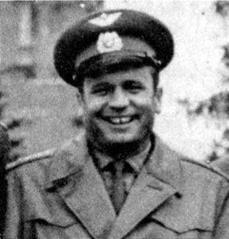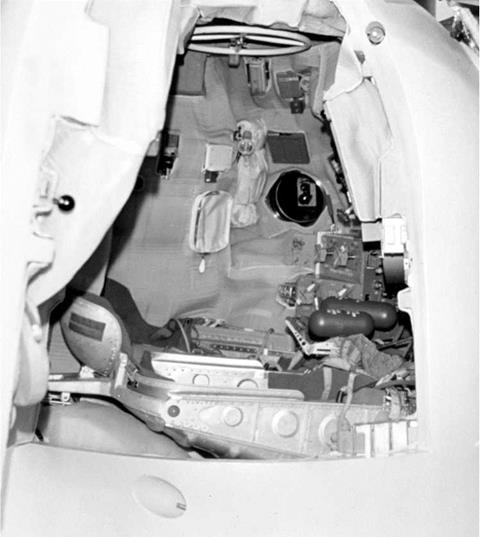FINAL COSMONAUT SELECTION FOR LANDING MISSION
Prime landing crew: Leonov (commander, LK), Oleg Makarov (flight engineer, LOK).
Second landing crew: Valeri Bykovsky (LK), Nikolai Rukhavishnikov (flight engineer, LOK).
Third landing crew: Pavel Popovich (LK) and Vitaly Sevastianov (flight engineer, LOK).
Reserves: Yevgeni Khrunov (LK), Viktor Patsayev, Anatoli Voronov, Alexei Yeliseyev (LOK).
COSMONAUTS SELECTED TO LAND THE LK ON THE MOON
First landing mission: Alexei Leonov.
Second: Valery Bykovsky.
Third: Pavel Popovich.
By now, the training situation had at last improved. Leonov and others had flown adapted versions of the Mil-4 helicopter (variously called the Mil-9 and the V-10) for simulated lunar landings. These were quite hazardous, for they had to learn to land the Mils with the helicopter blades barely rotating. They would bring the Mil down to 110 m, the hover point for the lunar landing. At this stage, they would cut the engine, adjusting the blades to smoothen the touchdown. Normally, Alexei Leonov pointed out, this was a completely prohibited manoeuvre and a risky one. Bykovsky practised on a Mil-8 for several years, but hated it. A camera blister was fitted in the nose to record these landings and the film used for indoor simulations. Viktor Gorbatko alone built up over 600 hours flying helicopters. A second purpose of the helicopter landings was to test out the S-330 digital computers to be used on the LK, a test they quickly passed. A hovering vehicle, called the Turbolets, designed by Aram Rafaelyants, had been developed to test Soviet vertical take-off and landing planes like the Yakovlev 36. There was apparently some discussion about adapting the Turbolets as a lunar landing flying simulator. It may have been considered too dangerous for the cosmonauts – Neil Armstrong nearly lost his life when the temperamental American equivalent crashed – although the Turbolets never crashed and can still be seen in a museum today [26].
The cosmonauts went to Zagorsk to watch LK tests. Here, a full-scale model of the LK was used over a hundred times for what were called swing-drop tests: it was
|
Viktor Gorbatko: 600 hours of helicopter tests |
|
Soyuz trainer |
thrown against a mockup lunar surface at various angles to see whether it would topple or not and the limits of its tolerance. Many times they went to Baikonour to watch Proton launches (though they cannot always have been heartened by what they saw). EVAs were practised in the Kretchet suit, both on the ground and on adapted Tupolev 104 aircraft. The moonwalk was practised on the quasi-lunar landscape around the volcanoes of the Kamchatka peninsular in the Soviet far east. A large gymnasium in Moscow’s central park was converted for the practice of moonwalks, harnesses being fitted to simulate one-sixth gravity. Two expeditions of cosmonauts went into the deserts of Somalia so that they could familiarize themselves with the southern constellations that would be their main stellar point of reference during their return to Earth – mainly unflown cosmonauts were sent there so that they could not be recognized and attract American attention. They practised splashdown procedures in the Black Sea, presumably in anticipation of a water landing in the Indian Ocean (such training eventually became routine). However, the full landing simulator was not available until May 1970. Although the commanders and flight engineers trained together for many aspects of their mission, much of their training was also separate. Because only the commander would fly down to the moon and do the moonwalk, commanders did a lot of training as a group on their own. Similarly, the flight engineers had their own training programme.












